5 Ways AI is Being Used in the Fight Against COVID-19
People have asked me how Artificial Intelligence (AI) is being used in the fight against COVID-19. The answer is that it is being used in a myriad of ways! In this blog, I’ve discussed five innovative AI projects being used to help stop this global pandemic and save lives. Click here to watch an interview I did recently on this topic!
1 - Arguably the most discussed and used dashboard is the “COVID-19 Dashboard by the Center for Systems Science and Engineering (CSSE) at Johns Hopkins University”. You have likely seen it on television press conferences and it was recently featured on NPR. Developed by Ensheng Dong, Hongru Du, and Lauren Gardner at Johns Hopkins University, it provides stunning visuals of real-time data such as “Cumulative Confirmed Cases”, “Active Cases”, and “Testing Rate”, just to name a few. They have also open-sourced all of the data on Github at https://github.com/CSSEGISandData/COVID-19. They were the first to do this and it was recently the number one repository trending on GitHub! For technical details, you can read the article in the journal Lancet.
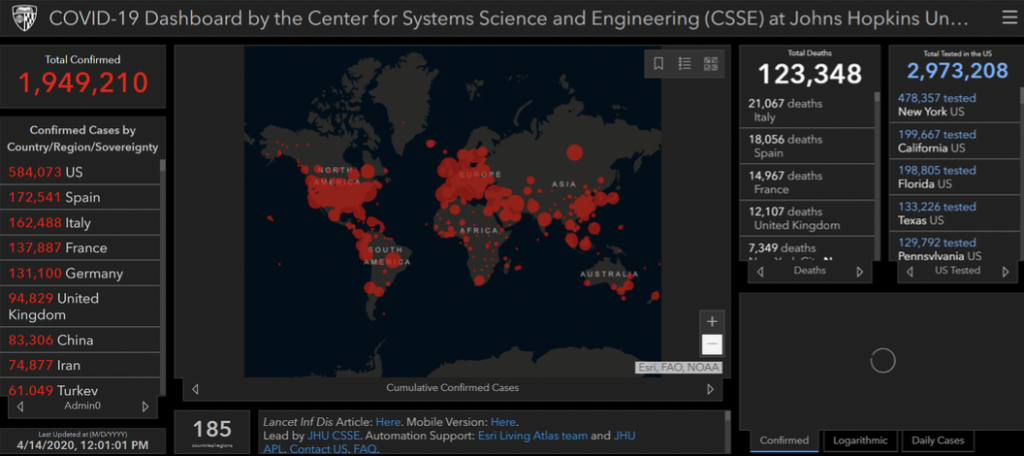
COVID-19 Dashboard by the Center for Systems Science and Engineering (CSSE) at Johns Hopkins University
2- An independent, nonprofit organization called “The How We Feel Project” has developed an app named How We Feel. The list of collaborators is a who’s who of innovation such as the Bill & Melinda Gates Foundation, the Harvard T.H. Chan School of Public Health, and the Howard Hughes Medical Institute. The app allows you to check in each day and report how you are feeling. Your check-in allows the institutions to crowdsource information about potential cases and track the virus. What a great way to get massive amounts of data quickly and easily. It’s projects like this that make prediction models better, especially since data is scarce for this new pandemic. Download the app from the App Store or Google Play.
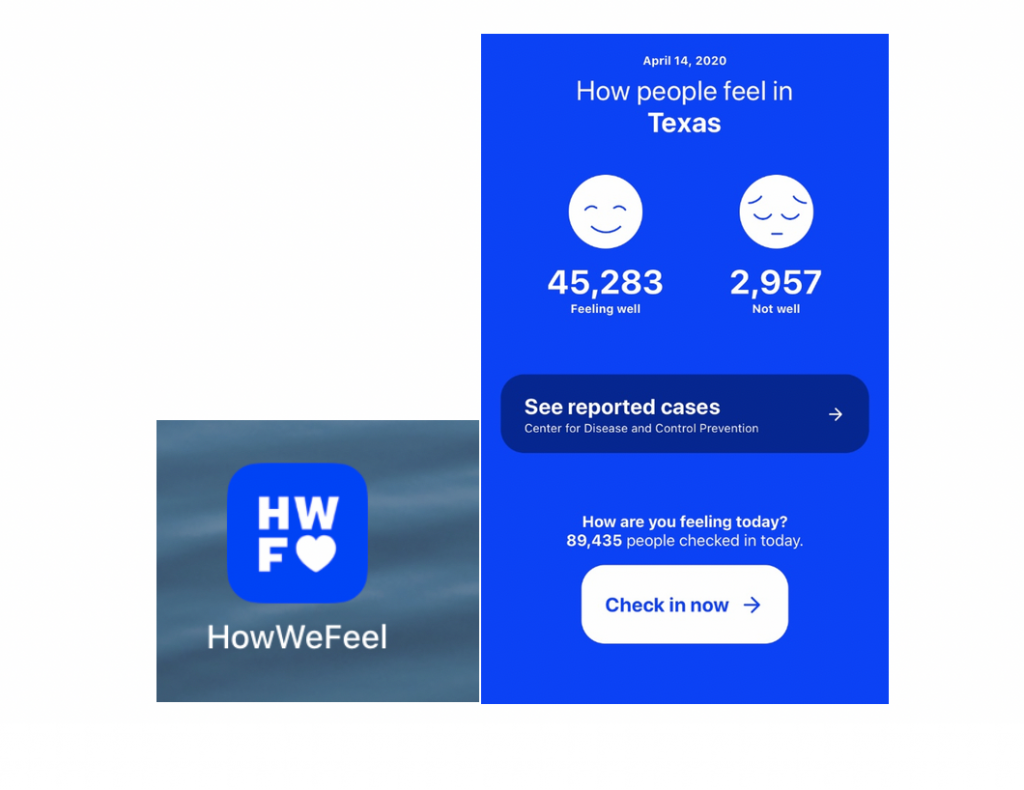
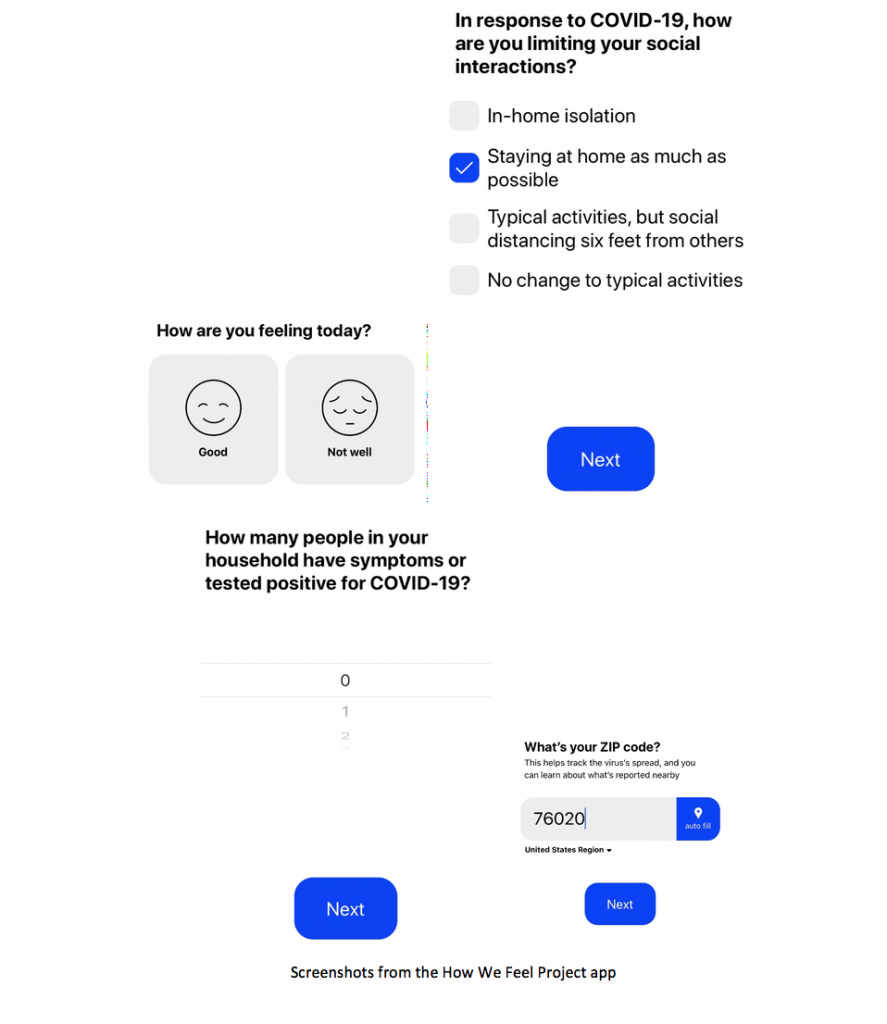
3- Apple recently released a mobility data trends tool from Apple Maps. The data may provide helpful insights to local governments and health authorities and may also be used as a foundation for new public policies by showing the change in volume of people driving, walking or taking public transit in their communities. Using aggregated data collected from Apple Maps, the new website indicates mobility trends for major cities and 63 countries or regions. The information is generated by counting the number of requests made to Apple Maps for directions. The data sets are then compared to reflect a change in volume of people driving, walking or taking public transit around the world. Data availability in a particular city, country, or region is subject to a number of factors, including minimum thresholds for direction requests made per day. As with ‘How We Feel’, this is generating invaluable data to help researchers in the fight against COVID-19. Here is the graph for Houston, TX, from January 13 to April 14. Walking, driving, and transit have all decreased by at least 54%. Looks like people are social distancing!
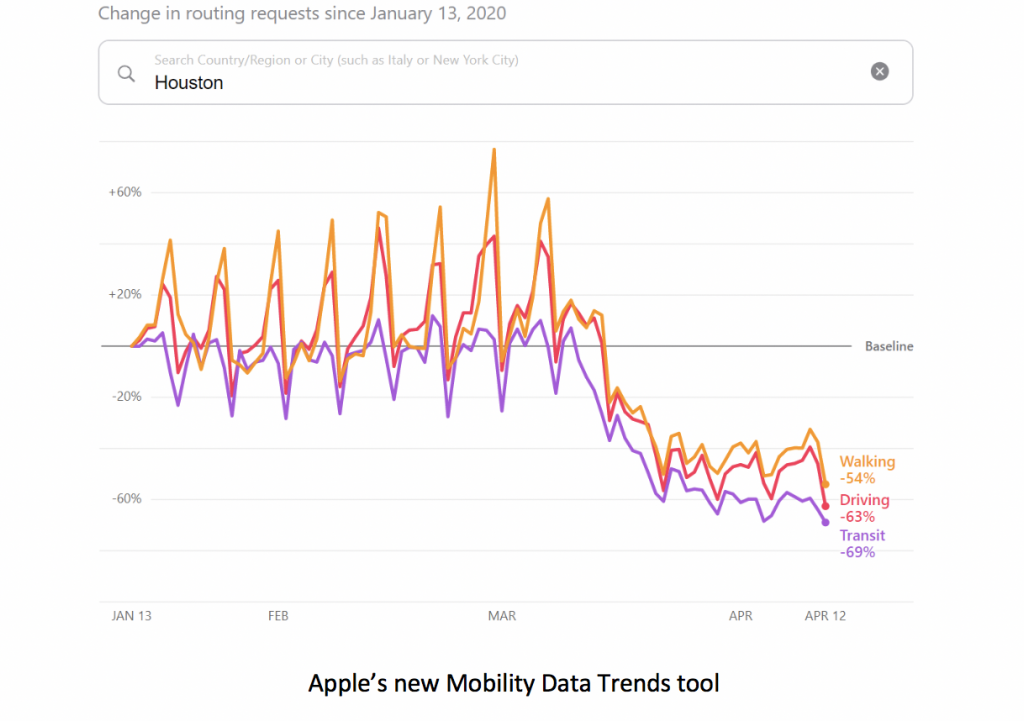
4- The Institute for Health Metrics and Evaluation COVID-19 Projections is one of my absolute favorites. It shows projections for hospital resource use, deaths per day, and total deaths, along with predictions for when peaks will occur. In addition to an easy-to-read dashboard, it provides details on the models being used for predictions and the assumptions that are made, such as assuming full social distancing through May 2020. I think this is crucial. Predictive models all have certain assumptions inherently build into them. If you do not know what the assumptions are, you cannot effectively evaluate how well a model is performing. The website also gives regular updates on how the model changes as new data is released. If you are looking to see predictions quickly and know how the predictions are being made, this is the website to view.
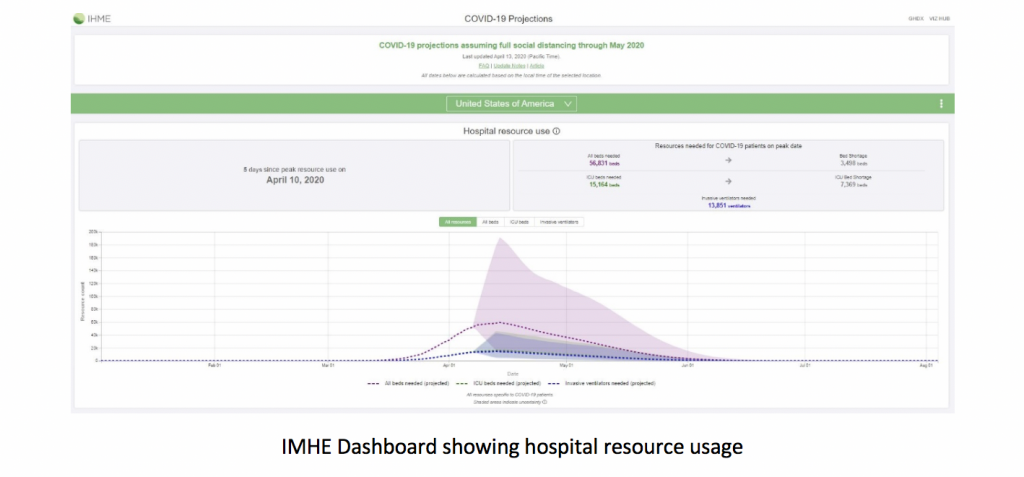
5- Finally, on April 10, Apple and Google put out a press release stating that they are partnering on COVID-19 contact tracing technology that will be released in May. “The new system … would use short-range Bluetooth communications to establish a voluntary contact-tracing network, keeping extensive data on phones that have been in close proximity with each other. Official apps from public health authorities will get access to this data, and users who download them can report if they’ve been diagnosed with COVID-19. The system will also alert people who download them to whether they were in close contact with an infected person.” Let me reiterate - this app will actually alert you if you come into close contact with an infected person. If this happens, you can immediately take precautions and get tested early. This could literally be a lifesaver!
Here is a list of helpful sites that use AI to help fight COVID-19. If you know of any others, please leave them in the comments or email them. Please be sure to keep up social distancing. Nothing is more effective to stop the spread!
The How We Feel Project - https://howwefeel.org/
Health Map - https://www.healthmap.org/covid-19/?mod=article_inline
BBC Coronavirus Tracking - https://www.bbc.com/news/world-51235105
Coronavirus Dashboard by thebaselab - https://coronavirus.thebaselab.com/
Genomic epidemiology of novel coronavirus by NextStrain - https://nextstrain.org/ncov/global
COVID-19 tracker for Singapore - https://www.againstcovid19.com/singapore/dashboard
Covid-19 tracker from Microsoft - https://www.bing.com/covid
IHME COVID-19 Projections - http://www.healthdata.org/covid
Wim Naude’s excellent review of AI technologies involved in the fight against COVID-19 - https://towardsdatascience.com/artificial-intelligence-against-covid-19-an-early-review-92a8360edaba
